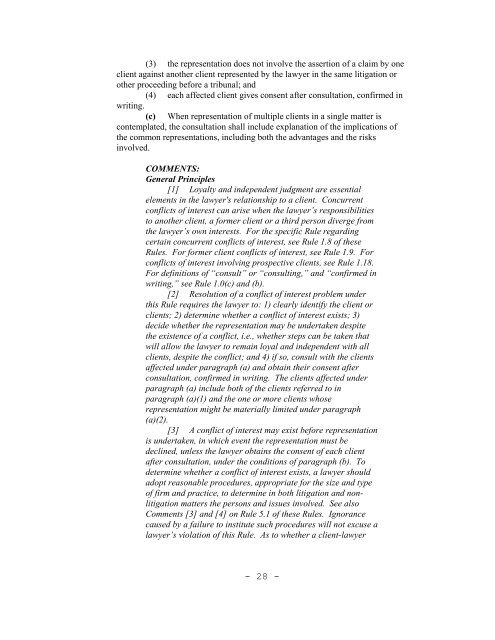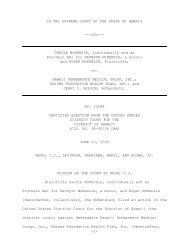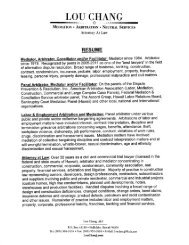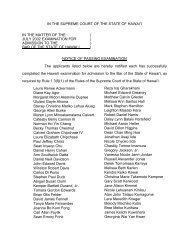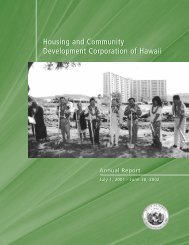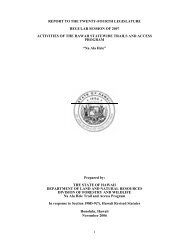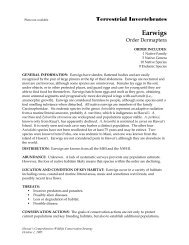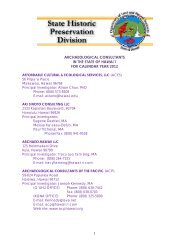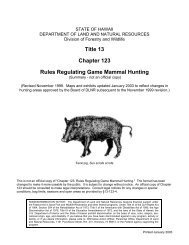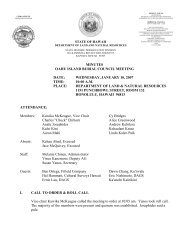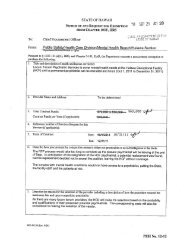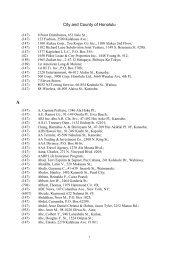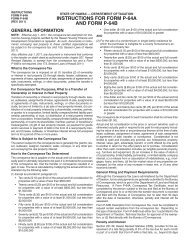amendments to the Hawaii Rules of Professional Conduct
amendments to the Hawaii Rules of Professional Conduct
amendments to the Hawaii Rules of Professional Conduct
You also want an ePaper? Increase the reach of your titles
YUMPU automatically turns print PDFs into web optimized ePapers that Google loves.
(3) <strong>the</strong> representation does not involve <strong>the</strong> assertion <strong>of</strong> a claim by one<br />
client against ano<strong>the</strong>r client represented by <strong>the</strong> lawyer in <strong>the</strong> same litigation or<br />
o<strong>the</strong>r proceeding before a tribunal; and<br />
(4) each affected client gives consent after consultation, confirmed in<br />
writing.<br />
(c) When representation <strong>of</strong> multiple clients in a single matter is<br />
contemplated, <strong>the</strong> consultation shall include explanation <strong>of</strong> <strong>the</strong> implications <strong>of</strong><br />
<strong>the</strong> common representations, including both <strong>the</strong> advantages and <strong>the</strong> risks<br />
involved.<br />
COMMENTS:<br />
General Principles<br />
[1] Loyalty and independent judgment are essential<br />
elements in <strong>the</strong> lawyer's relationship <strong>to</strong> a client. Concurrent<br />
conflicts <strong>of</strong> interest can arise when <strong>the</strong> lawyer’s responsibilities<br />
<strong>to</strong> ano<strong>the</strong>r client, a former client or a third person diverge from<br />
<strong>the</strong> lawyer’s own interests. For <strong>the</strong> specific Rule regarding<br />
certain concurrent conflicts <strong>of</strong> interest, see Rule 1.8 <strong>of</strong> <strong>the</strong>se<br />
<strong>Rules</strong>. For former client conflicts <strong>of</strong> interest, see Rule 1.9. For<br />
conflicts <strong>of</strong> interest involving prospective clients, see Rule 1.18.<br />
For definitions <strong>of</strong> “consult” or “consulting,” and “confirmed in<br />
writing,” see Rule 1.0(c) and (b).<br />
[2] Resolution <strong>of</strong> a conflict <strong>of</strong> interest problem under<br />
this Rule requires <strong>the</strong> lawyer <strong>to</strong>: 1) clearly identify <strong>the</strong> client or<br />
clients; 2) determine whe<strong>the</strong>r a conflict <strong>of</strong> interest exists; 3)<br />
decide whe<strong>the</strong>r <strong>the</strong> representation may be undertaken despite<br />
<strong>the</strong> existence <strong>of</strong> a conflict, i.e., whe<strong>the</strong>r steps can be taken that<br />
will allow <strong>the</strong> lawyer <strong>to</strong> remain loyal and independent with all<br />
clients, despite <strong>the</strong> conflict; and 4) if so, consult with <strong>the</strong> clients<br />
affected under paragraph (a) and obtain <strong>the</strong>ir consent after<br />
consultation, confirmed in writing. The clients affected under<br />
paragraph (a) include both <strong>of</strong> <strong>the</strong> clients referred <strong>to</strong> in<br />
paragraph (a)(1) and <strong>the</strong> one or more clients whose<br />
representation might be materially limited under paragraph<br />
(a)(2).<br />
[3] A conflict <strong>of</strong> interest may exist before representation<br />
is undertaken, in which event <strong>the</strong> representation must be<br />
declined, unless <strong>the</strong> lawyer obtains <strong>the</strong> consent <strong>of</strong> each client<br />
after consultation, under <strong>the</strong> conditions <strong>of</strong> paragraph (b). To<br />
determine whe<strong>the</strong>r a conflict <strong>of</strong> interest exists, a lawyer should<br />
adopt reasonable procedures, appropriate for <strong>the</strong> size and type<br />
<strong>of</strong> firm and practice, <strong>to</strong> determine in both litigation and nonlitigation<br />
matters <strong>the</strong> persons and issues involved. See also<br />
Comments [3] and [4] on Rule 5.1 <strong>of</strong> <strong>the</strong>se <strong>Rules</strong>. Ignorance<br />
caused by a failure <strong>to</strong> institute such procedures will not excuse a<br />
lawyer’s violation <strong>of</strong> this Rule. As <strong>to</strong> whe<strong>the</strong>r a client-lawyer<br />
- 28


